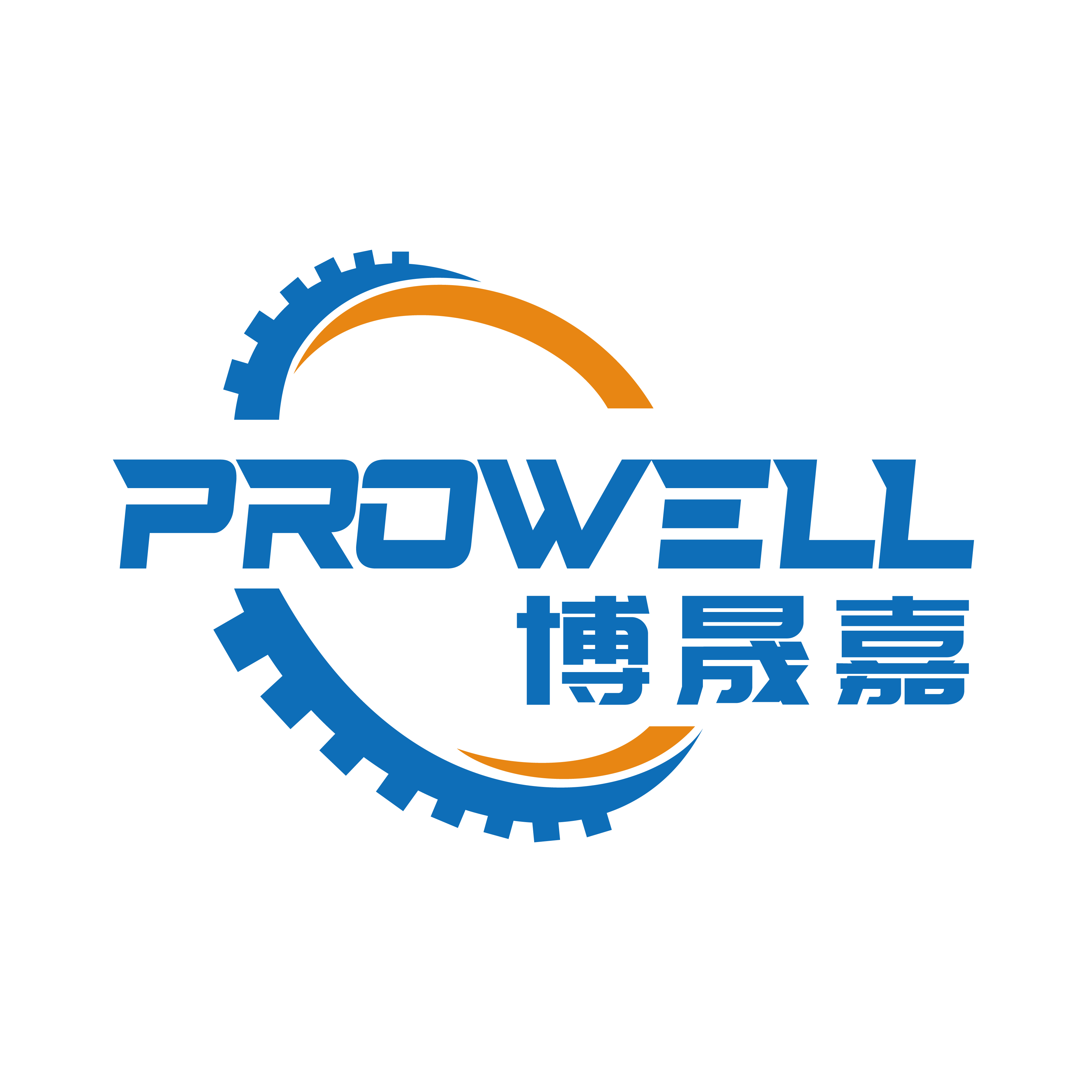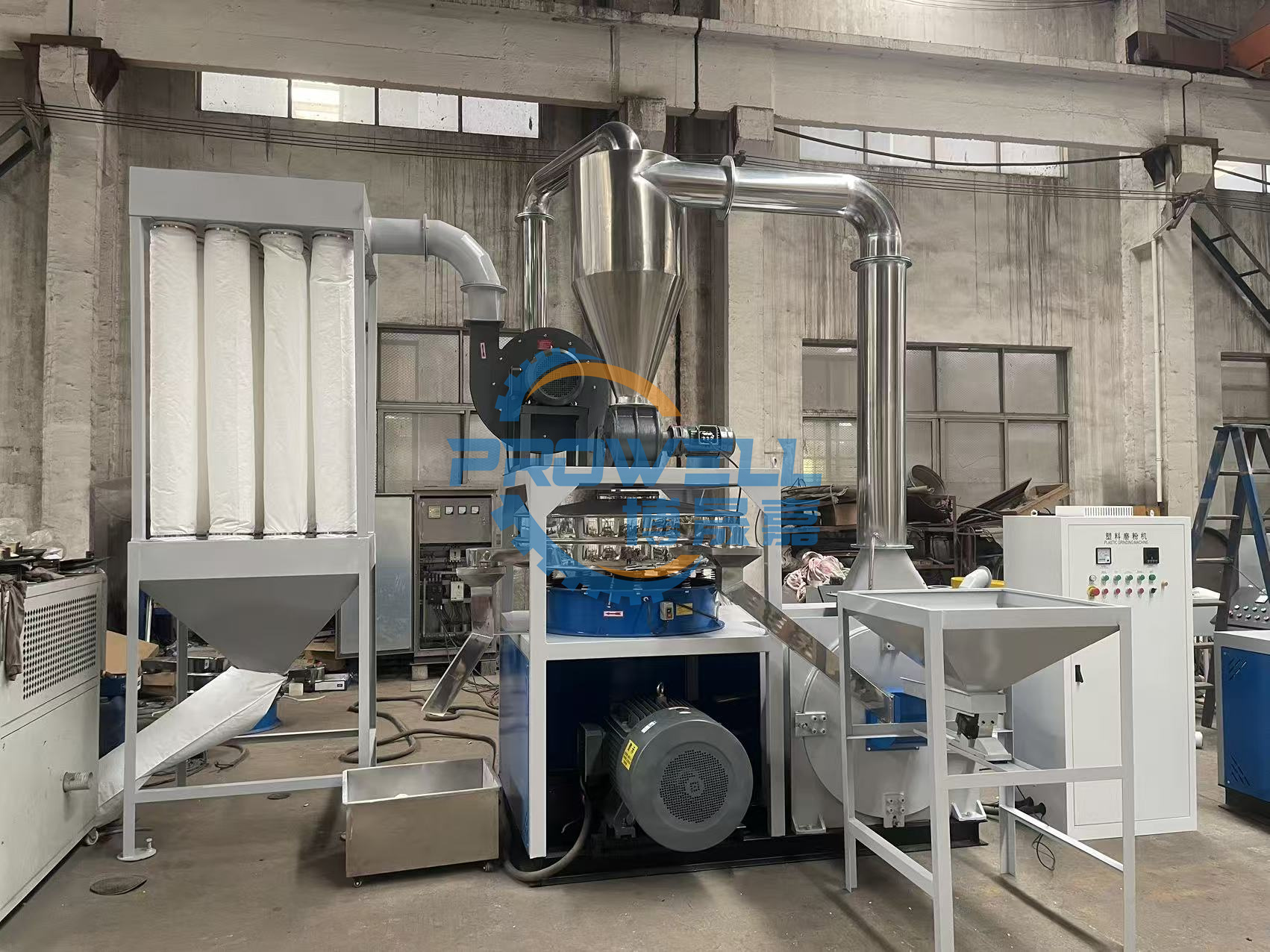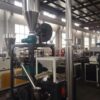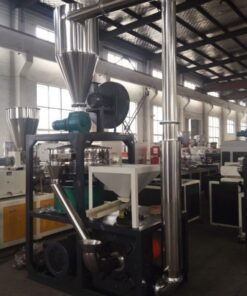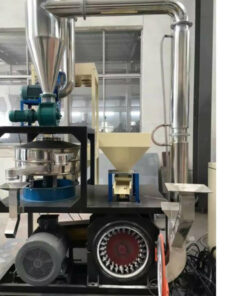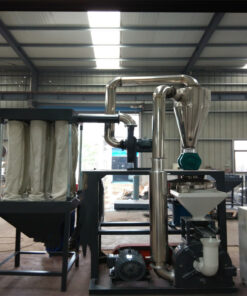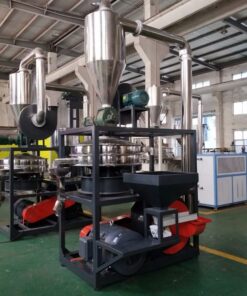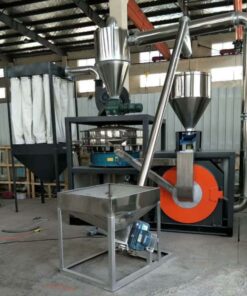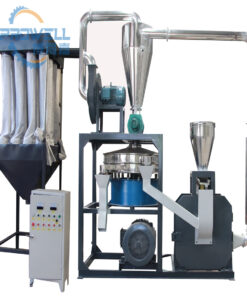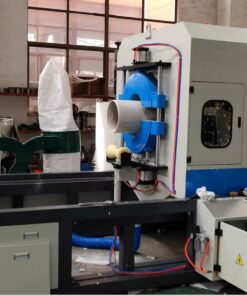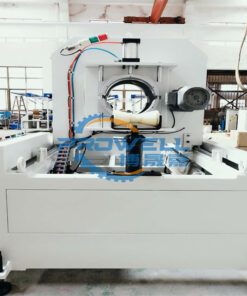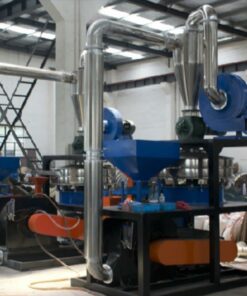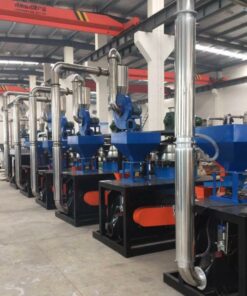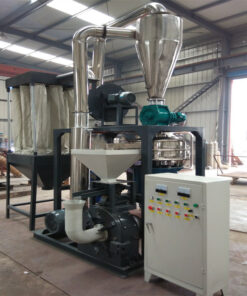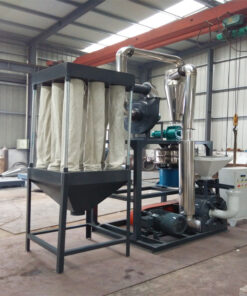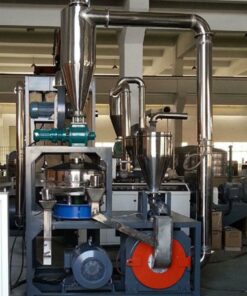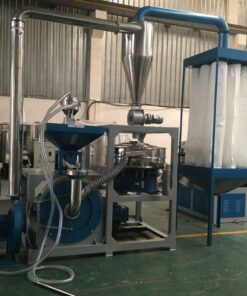PVC Crushed Material Grinding Milling Machine: The Ultimate Guide for PVC Recycling & Reprocessing
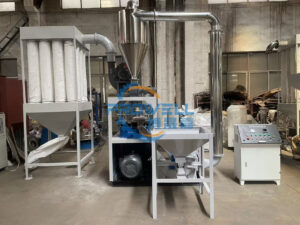
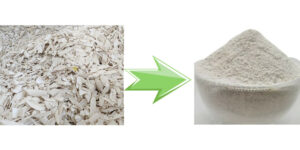
In the global push for sustainability and circular economy, PVC (Polyvinyl Chloride) recycling has become a critical focus for manufacturers, waste management firms, and environmental organizations. PVC is one of the most widely used plastics—found in pipes, profiles, cables, packaging, and consumer goods—but its durability means improper disposal leads to long-term environmental harm. To unlock the value of PVC waste, PVC crushed material grinding milling machines play a pivotal role: they transform coarse PVC crushed scraps into fine, uniform powder or granules, making them ready for reprocessing into new high-quality PVC products.
What Is a PVC Crushed Material Grinding Milling Machine?
A PVC crushed material grinding milling machine is specialized equipment designed to reduce pre-crushed PVC waste (such as offcuts, rejected products, or post-consumer PVC scraps) into consistent, fine particles. Unlike general-purpose grinders, this machine is engineered to handle PVC’s unique properties—including its rigidity (for hard PVC) or flexibility (for soft PVC with plasticizers)—without causing overheating, material degradation, or clogging.
How It Works (Simplified)
- Feeding: Pre-crushed PVC material (typically 20-50mm in size) is fed into the machine’s hopper, often via a conveyor for automated operation.
- Grinding: Inside the machine, high-speed rotating blades or grinding discs (made of wear-resistant steel) crush and mill the PVC scraps. Many models include a cooling system to prevent PVC from melting (PVC’s melting point is ~160°C, and friction during grinding can generate heat).
- Screening & Classification: A built-in sieve or screen separates particles by size (e.g., 20-120 mesh). Oversized particles are recirculated back to the grinding chamber for further processing, ensuring uniform output.
- Collection: The final fine PVC powder/granules are collected in a storage bin or conveyed directly to downstream reprocessing equipment (e.g., extruders for pipe production).
Key Benefits of Using a PVC Crushed Material Grinding Milling Machine
Investing in a dedicated PVC grinding milling machine offers tangible advantages for businesses in PVC recycling and manufacturing. Here’s why it’s a game-changer:
1. Boosts Environmental Sustainability
PVC can take centuries to decompose in landfills. By grinding crushed PVC into reusable material, you divert waste from landfills and reduce reliance on virgin PVC resin—lowering carbon emissions associated with virgin plastic production (virgin PVC manufacturing requires significant energy and releases toxic byproducts like dioxins).
2. Cuts Production Costs
Reground PVC (often called “regrind”) costs 30-50% less than virgin PVC resin. For manufacturers producing PVC pipes, window profiles, or cables, replacing 20-50% of virgin resin with high-quality regrind (from your grinding machine) directly reduces raw material expenses.
3. Ensures Consistent Reprocessing Quality
PVC products require uniform material consistency to meet performance standards (e.g., pipe strength, cable insulation). A specialized grinding machine delivers particles of the exact mesh size you need (e.g., 40 mesh for flexible PVC films, 80 mesh for rigid PVC pipes), avoiding defects like bubbles or weak spots in finished products.
4. High Efficiency for Large-Scale Operations
Modern PVC grinding milling machines handle high throughput—ranging from 50 kg/h (small-scale) to 1,000 kg/h (industrial-grade). Many models include automated feeding and dust collection systems, minimizing labor costs and keeping workspaces clean (critical for compliance with occupational health regulations).
How to Choose the Right PVC Crushed Material Grinding Milling Machine
Not all PVC grinders are created equal. To select a machine that matches your needs, focus on these 5 critical factors:
| Factor | What to Look For |
|---|---|
| Grinding Fineness Range | Choose a machine that offers adjustable mesh sizes (e.g., 20-120 mesh) to match your reprocessing goals. For example, if you make PVC injection-molded parts, opt for a machine that can grind down to 80-100 mesh. |
| Throughput Capacity | Calculate your daily/weekly PVC waste volume. A small workshop processing 100 kg/day needs a 50-100 kg/h machine; a large recycling plant handling 5 tons/day requires a 500+ kg/h industrial model. |
| Material Compatibility | Ensure the machine works with your PVC type:
– Hard PVC: Look for reinforced blades (e.g., high-carbon steel) to handle rigidity. – Soft PVC (with plasticizers): Choose a machine with a cooling jacket to prevent plasticizer evaporation and material sticking. |
| Energy Efficiency & Compliance | Select ENERGY STAR or CE-certified models to reduce electricity costs. For dust control, pick machines with built-in cyclone dust collectors (critical for meeting EPA or EU ETS emissions standards). |
| After-Sales Support | PVC grinders have wear parts (blades, screens) that need replacement. Choose a manufacturer that offers fast delivery of spare parts and on-site installation/ maintenance services (avoid brands with long lead times). |
Applications of Ground PVC Crushed Material
The fine powder/granules from your PVC crushed material grinding milling machine are versatile—here are the most common uses:
- Rigid PVC Products: Pipes, window/door profiles, flooring, and electrical junction boxes (using 40-80 mesh regrind).
- Flexible PVC Products: Cable insulation, vinyl gloves, shower curtains, and toy components (using 60-100 mesh regrind).
- PVC Coatings & Adhesives: Fine 10-80 mesh PVC powder is mixed with binders to make coatings for metal or adhesives for packaging.
- Construction Materials: Reground PVC is added to asphalt for road paving (improves durability) or to concrete additives (reduces cracking).
A well-maintained PVC grinding milling machine can last 5-10 years. Follow these best practices:
- Daily Cleaning: After use, clear residual PVC from the grinding chamber and screen to prevent material buildup (buildup can cause overheating and uneven grinding).
- Regular Wear Part Checks: Inspect blades and screens weekly. Replace blades when they show signs of dullness (e.g., uneven particle size) and screens if they develop holes.
- Lubrication: Lubricate bearings and moving parts monthly using high-temperature grease (check the manufacturer’s manual for recommended lubricant type).
- Avoid Overloading: Never feed more PVC than the machine’s rated capacity—overloading strains the motor and shortens its life.
- Train Operators: Ensure staff know how to adjust mesh sizes, troubleshoot jams, and shut down the machine safely (human error is a top cause of equipment damage).
PVC Crushed Material Grinding Milling Machine Conclusion
For businesses looking to profit from PVC recycling while reducing their environmental footprint, a PVC crushed material grinding milling machine is an indispensable investment. It turns low-value PVC waste into high-quality regrind, cuts costs, and ensures compliance with global sustainability standards.
When choosing your machine, prioritize factors like throughput, mesh size flexibility, and after-sales support—these will determine how well the equipment serves your long-term needs. With the right grinder, you’ll not only contribute to a circular economy but also gain a competitive edge in the growing PVC recycling market.
Ready to find the perfect PVC crushed material grinding milling machine for your operation? Start by assessing your waste volume and reprocessing goals—and partner with a trusted manufacturer that specializes in PVC recycling equipment.
